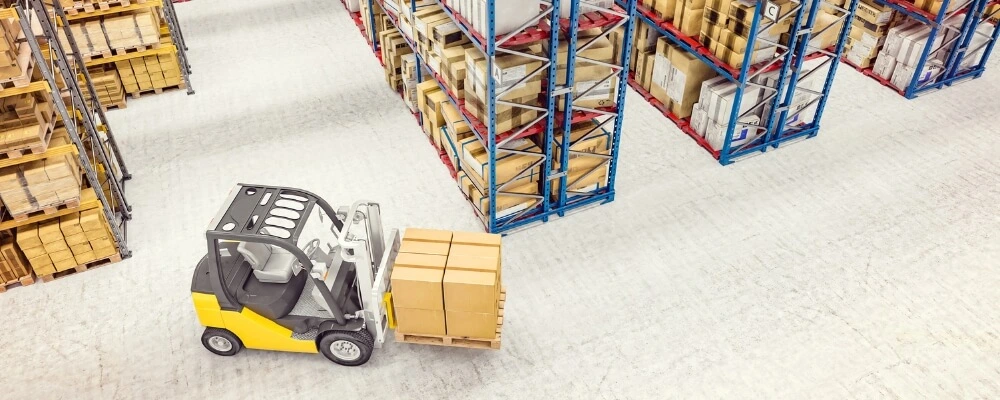Safety in the workplace is of primary concern in any working environment. However, while safety can almost be an afterthought in some workplaces, others, like warehouses, have dangers lurking around every corner.
From heavy machinery to high-stacked shelves, warehouses present unique challenges that require robust safety measures. In recent years, automation has emerged as a powerful tool to enhance safety protocols and reduce warehouse workplace accidents.
Undoubtedly, the integration of AI and automation can elevate warehouse safety to new levels. Here, we look at four ways it can achieve this.
4 Ways Automation Can Improve Warehouse Safety
Automation can significantly enhance warehouse safety by reducing the risks associated with manual tasks and improving overall efficiency. Here are four ways automation can improve warehouse safety:
1. Automation Reduces Human Error
Human error is reckoned to be behind 80 – 90% of all industrial accidents. This statistic underscores the critical role of automation in enhancing warehouse safety. By reducing the reliance on manual labor, automation significantly minimizes the risks associated with human error.
Automated systems are designed to perform tasks with precision and consistency, reducing the chances of mishaps due to manual handling. Here are some ways automation helps in reducing human error:
- Consistency: Automated systems can perform the same task repeatedly without any deviation, ensuring consistency in operations.
- Precision: Automation can handle tasks with precision that is hard to achieve manually. This is particularly beneficial when dealing with delicate or hazardous materials.
- Reduced Fatigue: Automated systems do not tire or get distracted, eliminating errors that can occur due to human fatigue or loss of concentration.
By reducing human error, automation enhances safety and improves the overall efficiency of warehouse operations.

2. Improving Ergonomics With Automation
Bad ergonomics could be considered a hidden danger that exists in every workplace. While injury-causing accidents are stealing the headlines, bad ergonomics can profoundly impact workers’ health and productivity over time. Poor ergonomics can lead to serious musculoskeletal disorders in a warehouse environment, where physical tasks are the norm.
This is where automation steps in, transforming the way tasks are performed in warehouses. Automation significantly reduces the physical strain on workers by taking over strenuous tasks and optimizing workstations. Here are some of the ways it is achieving this:
- Automated Lifting and Transporting: Automated guided vehicles (AGVs) and robotic arms can handle heavy lifting and transporting tasks, reducing the need for manual labor.
- Reduced Repetitive Tasks: Automation can take over repetitive tasks, reducing the risk of strain injuries.
- Automated Sorting and Packaging: Automation can take over tasks like sorting and packaging, which often require repetitive bending and reaching. This reduces the risk of back injuries and other strain-related health issues.
Improved ergonomics might not be the first thing that springs to mind when considering the role of automation in warehouses, but the long-term health and safety benefits of this are significant.
3. Software Enhances Safety and Efficiency
Technology has gone through a sudden and rapid transition as we enter the age of AI. Software solutions have become an integral part of warehouse operations in this new era. They streamline processes and play a significant role in enhancing safety.
One such solution is production planning software. By optimizing the production process, it ensures tasks are carried out systematically, reducing the chances of mishaps due to chaos or confusion.
Below are a few examples of how software can enhance safety in warehouses.
- Efficient Task Scheduling: Production planning software can schedule tasks to minimize congestion and confusion in the warehouse, reducing the risk of accidents.
- Real-time Monitoring: These software solutions provide real-time updates about warehouse operations, enabling quick identification and resolution of potential safety issues.
- Predictive Analysis: Advanced software can predict potential risks and suggest preventive measures, further enhancing safety.
Software is the beating heart of automation, allowing the magic to happen. Modern software solutions are improving warehouse safety by facilitating the automation of numerous processes.

4. Automation Enhances Emergency Response
Even with the most rigorous safety protocols in place accidents are an inevitability. Sooner or later a simple mishap or a series of unforeseen circumstances can lead to an accident.
In these situations, every second counts. A quick and efficient response can significantly reduce the incident’s impact and ensure the workforce’s safety. Automation plays a crucial role in this aspect of warehouse safety.
Automated systems can be programmed to respond to emergencies swiftly and efficiently. Here are a few of the ways automation can improve emergency responses:
- Automated Alarm Systems: These systems can detect emergencies like fire or gas leaks faster than humans and trigger alarms immediately, ensuring quick evacuation or response.
- Lone Worker Systems: Protecting lone workers can be enhanced by automation.
- Automated Fire Suppression: In case of a fire, automated sprinkler systems can react faster than humans, reducing the impact of the fire.
- Automated Shutdown: In certain emergencies, automated systems can safely shut down machinery or operations, preventing further damage or risk.
By enhancing emergency response, automation can significantly improve the overall safety of warehouse operations.
Automation: The Key to Warehouse Safety
Warehouses are dangerous places to work and anything that can add layers of safety has to be a positive. While there are concerns about the use of AI and automation in the workplace, there are undoubted benefits. Safety is absolutely one of these.
By embracing the latest in automation technology and software, the warehouse can become far safer, and by proxy, more productive and efficient.

